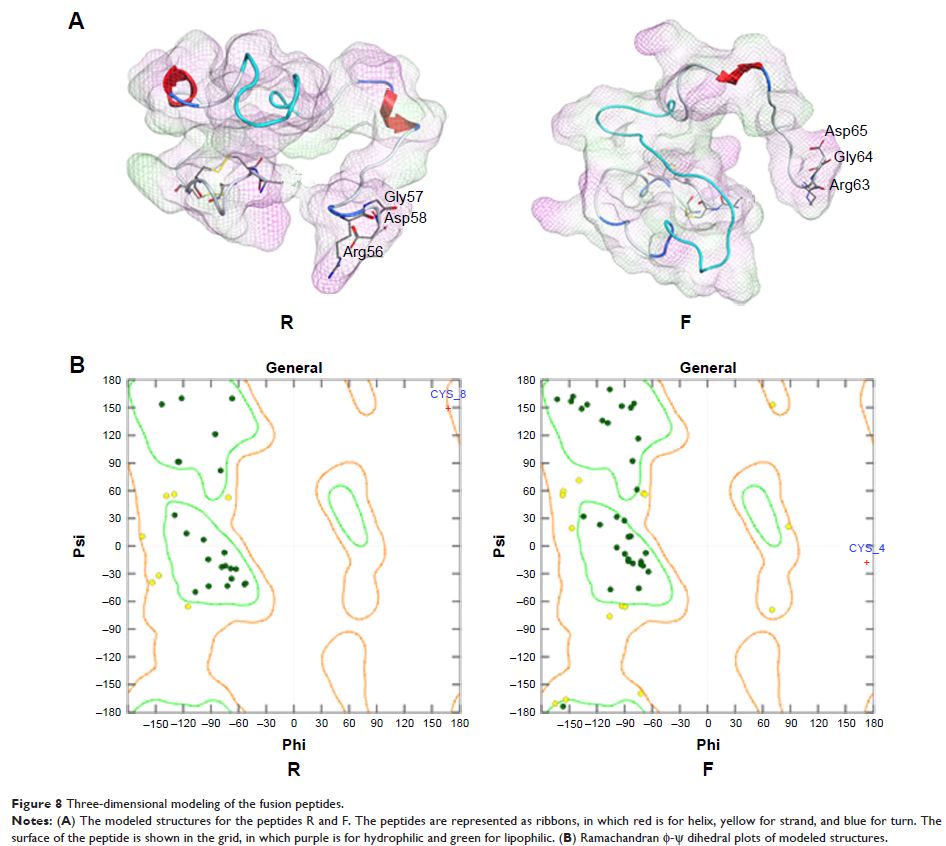9 0 6 7 6
论文已发表
注册即可获取德孚的最新动态
IF 收录期刊
- 2.6 Breast Cancer (Dove Med Press)
- 3.9 Clin Epidemiol
- 3.3 Cancer Manag Res
- 3.9 Infect Drug Resist
- 3.6 Clin Interv Aging
- 4.8 Drug Des Dev Ther
- 2.8 Int J Chronic Obstr
- 8.0 Int J Nanomed
- 2.3 Int J Women's Health
- 3.2 Neuropsych Dis Treat
- 4.0 OncoTargets Ther
- 2.2 Patient Prefer Adher
- 2.8 Ther Clin Risk Manag
- 2.7 J Pain Res
- 3.3 Diabet Metab Synd Ob
- 4.3 Psychol Res Behav Ma
- 3.4 Nat Sci Sleep
- 1.9 Pharmgenomics Pers Med
- 3.5 Risk Manag Healthc Policy
- 4.5 J Inflamm Res
- 2.3 Int J Gen Med
- 4.1 J Hepatocell Carcinoma
- 3.2 J Asthma Allergy
- 2.3 Clin Cosmet Investig Dermatol
- 3.3 J Multidiscip Healthc

新型抗血管生成小肽和大肠杆菌中的抗肿瘤小肽的新型生产方法
Authors Setrerrahmane S, Yu J, Hao J, Zheng H, Xu H
Received 14 March 2017
Accepted for publication 15 September 2017
Published 8 November 2017 Volume 2017:11 Pages 3207—3220
DOI https://doi.org/10.2147/DDDT.S136957
Checked for plagiarism Yes
Review by Single-blind
Peer reviewers approved by Dr Akshita Wason
Peer reviewer comments 4
Editor who approved publication: Prof. Dr. Frank Boeckler
Background: Developing innovative drugs with potent efficacy, specificity, and
high safety remains an ongoing task in antitumor therapy development. In the
last few years, peptide drugs have become attractive agents in cancer therapy.
HM-3, mainly with antiangiogenic effect, and AP25, with an additional
antiproliferative effect, are two peptides designed in our laboratory targeting
αvβ3 and α5β1 integrins,
respectively. The low molecular weight of the two peptides renders their recombinant
expression very difficult, and the complicated structure of AP25 makes its
chemical synthesis restricted, which presents a big challenge for its
development.
Methods: Bifunctional peptides designed by the ligation of HM-3 and AP25,
using linkers with different flexibility, were prepared using recombinant DNA
technology in Escherichia coli .
The fusion peptides were expressed in a modified auto-induction medium based on
a mixture of glucose, glycerol, and lactose as carbon substrates and NH4+ as nitrogen source without any amino acid or other elements.
Subsequently, the antiangiogenic, antiproliferative, and cell adhesion assays
were conducted to evaluate the bioactivity of the two fusion peptides.
Results: The peptides were successfully expressed in a soluble form without
any induction, which allows the culture to reach higher cell density before
protein expression occurs. Human umbilical vein endothelial cell migration
assay and chick embryo chorioallantoic membrane assay showed, at low doses, a significantly
increased antiangiogenic effect (>75%) of the purified products compared
with the single molecules. Meanwhile, MTT assay confirmed their enhanced
antitumor activity against gastric cancer cell line MGC-803; however, no
significant effect was observed on hepatoma HepG2 cells and no cytotoxicity on
normal human lens epithelial cell SRA01/04 and human epithelial esophageal
cells.
Conclusion: Bifunctional molecules with antiangiogenic and
antiproliferative effects were obtained by using this technique, which presents
an alternative for small peptide production, instead of the conventional
chemical method. The increased molecular weight facilitates the peptide
expression with a simultaneous improvement in their stability and biological
activity.
Keywords: innovative drugs, bifunctional peptides,
linkers, auto-induction, antiangiogenic, antitumor
